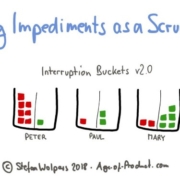The Scrum Master profession spans a wide variety of skills, knowledge, and experience. Scrum Masters try to create high performing teams and drive organizational change. Although our primary focus and responsibility is the process, it’s people we work with all the time. Surprisingly, our profession focuses predominantly on developing cognitive intelligence (IQ). We need to learn to appreciate the value of emotional intelligence (EQ) in becoming great Scrum Masters.
What Is Emotional Intelligence?
The term emotional intelligence was first created by researchers Peter Salavoy and John Mayer, and popularized by author Daniel Goleman. Emotional intelligence has been defined as, "the ability to recognize, understand, and manage our own emotions, and recognize, understand, and influence the emotions of others."
Source de l’article sur DZone (Agile)










 Don’t say this too loudly around agile conferences, but when it comes to the day-to-day work, Scrum and Kanban are basically the same.
Don’t say this too loudly around agile conferences, but when it comes to the day-to-day work, Scrum and Kanban are basically the same.
